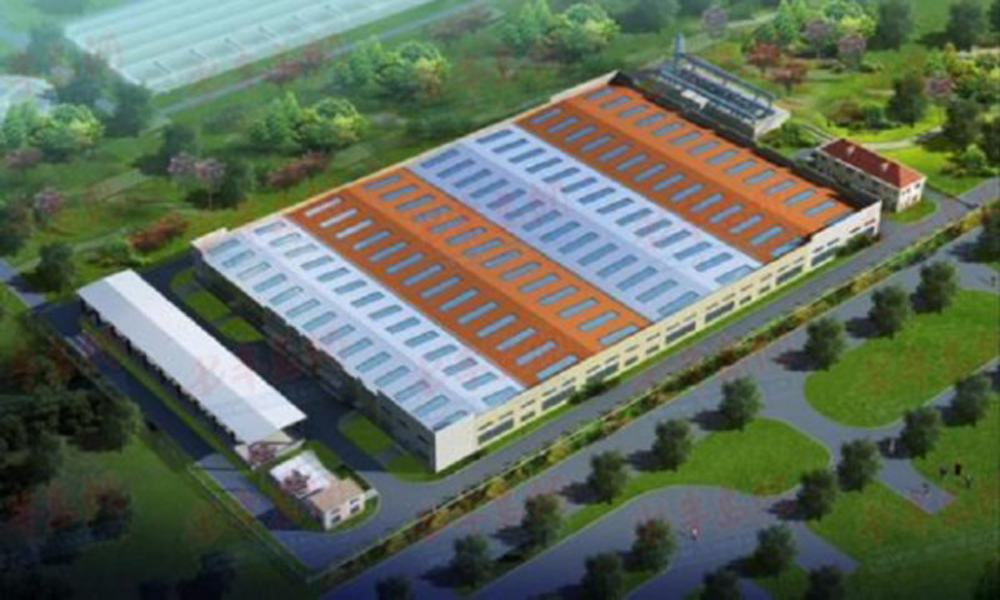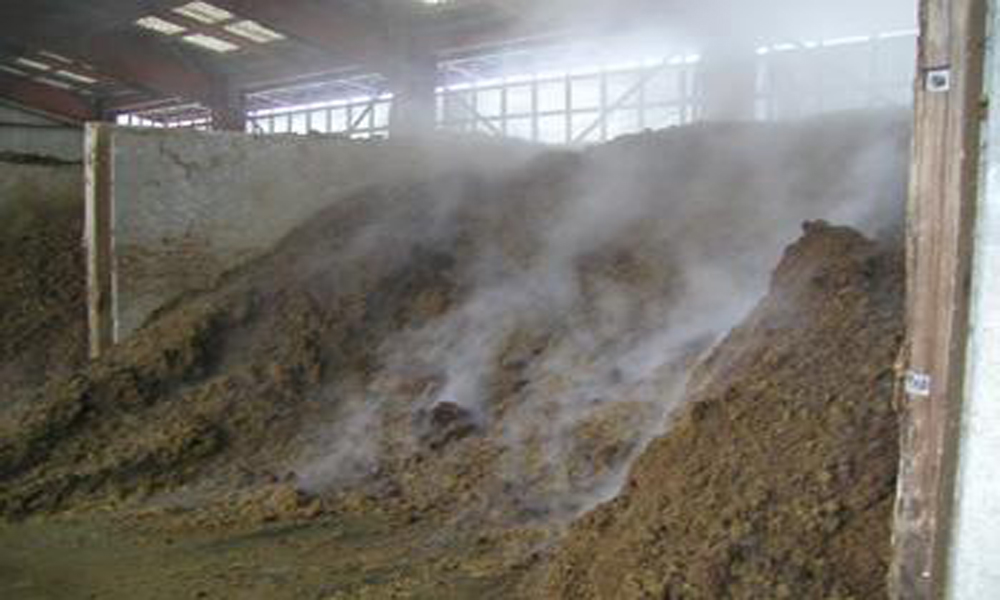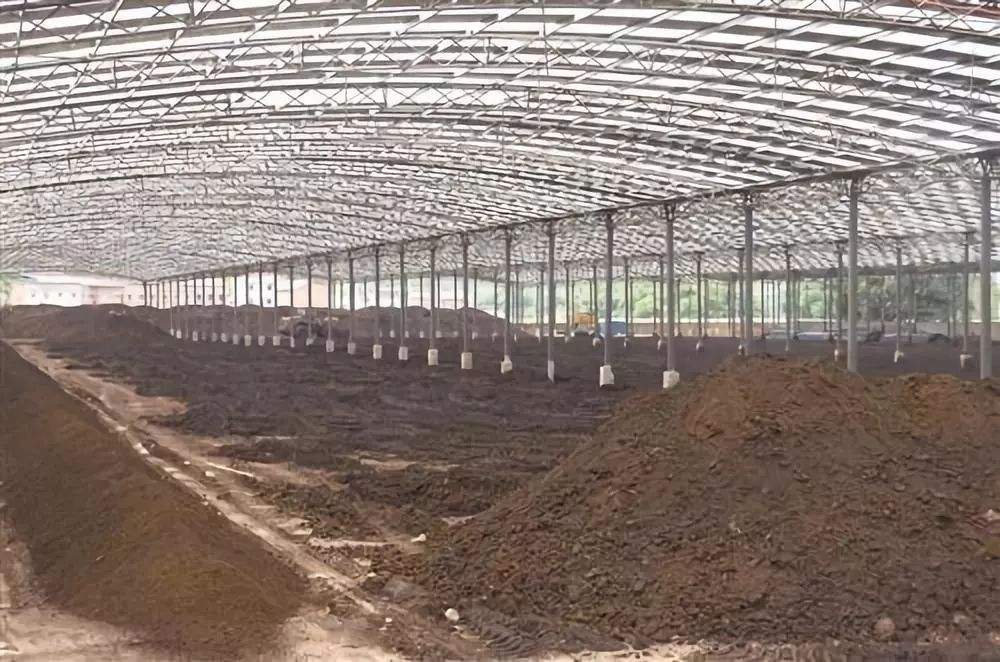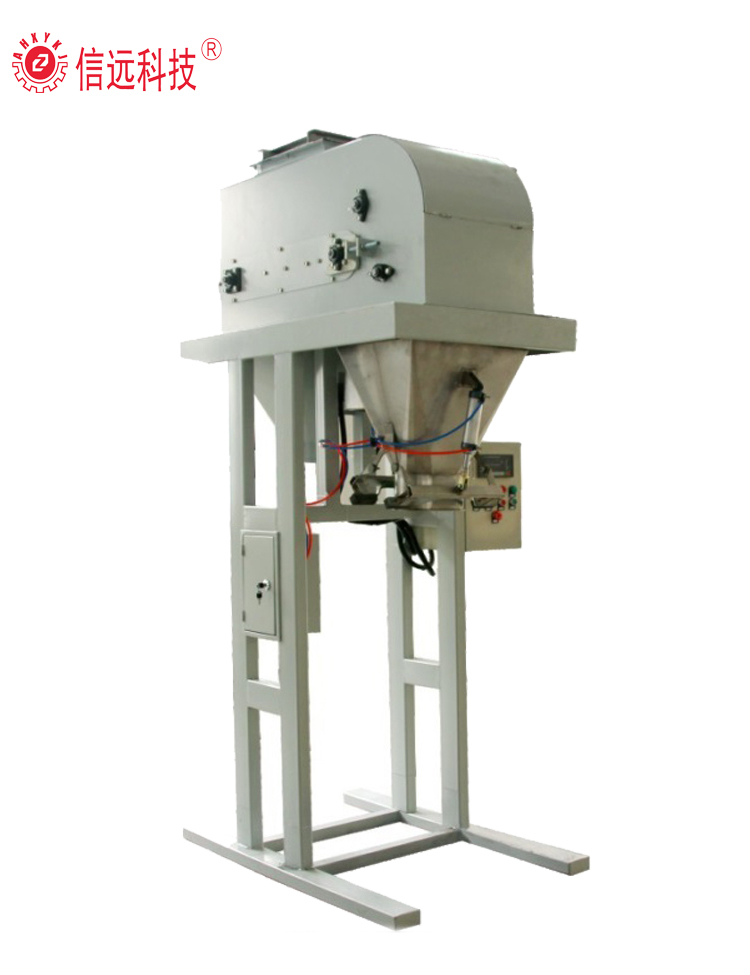The production of any qualified high quality organic fertilizer must pass through the composting process. Composting is a process in which organic matter is continuously degraded and stabilized under the action of microorganisms under certain conditions, and a product suitable for land use is produced.
Composting, an ancient and simple method for treating organic waste and manufacturing fertilizers, with the deepening of research and improvement of methods, its application is highly valued by various countries because it has good ecological significance and is also used for agricultural production. Come to benefit. There are many reports that the use of compost compost to prepare seedbeds can inhibit soil-borne diseases. And the antagonistic bacteria that come after the high temperature stage of the composting process can make the number of bacteria reach a high level; under the action of microorganisms, the organic matter in the composting process can not be easily decomposed, stabilized, and easily absorbed by the crop; Reduce the toxicity of heavy metals within a certain range. It can be seen that composting is a simple and effective method for manufacturing bio-organic fertilizer, which is beneficial to the development of ecological agriculture.
Most organic fertilizer products are only fermented for 15-20 days, and such products can only meet the standards of harmlessness. The high-quality organic fertilizer composting process generally takes 45-60 days. This is because in the early stage of composting and in the high temperature stage, harmful microorganisms such as pathogenic bacteria, eggs and weed seeds are killed, but the main role of microorganisms in this process is metabolism and reproduction, but only a small amount is produced. Metabolites, and these metabolites are also unstable and are not easily absorbed by plants. During the later cooling period, the microorganisms will undergo humification of organic matter, and in the process, a large number of metabolites beneficial to plant growth and absorption will be produced. This process takes 45-60 days. Composting through this process can achieve three purposes, one is harmless; the second is humification; the third is the production of a large number of microbial metabolites such as various antibiotics, protein substances.

Why does compost produce such an effect? We have a more detailed introduction to the principle of composting as below.
A: Principle of organic fertilizer fermentation
1.Transformation of organic matter during composting
The organic matter in the compost undergoes complex transformation under the action of microorganisms. This transformation can be summarized into two processes: one is the mineralization process of organic matter, that is, the decomposition of complex organic matter into simple substances, and finally the formation of carbon dioxide, water and mineral nutrients. The other is the humification process of organic matter, that is, the organic matter is decomposed and synthesized to form a more complex special organic matter-humus. The two processes are carried out simultaneously, but in opposite directions, under different conditions, the intensity of each is significantly different.
2.Mineralization of organic matter
(1) Decomposition of nitrogen-free organic matter The polysaccharide compound (starch, cellulose, hemicellulose) is first hydrolyzed into a monosaccharide by the action of a hydrolase secreted by the microorganism. Glucose decomposes rapidly under well-ventilated conditions, and intermediates such as alcohol, acetic acid, and oxalic acid do not easily accumulate, eventually forming CO2 and H2O, and releasing a large amount of heat. If the ventilation is poor, under the action of anaerobic microorganisms, the monosaccharide decomposes slowly, generates less heat, and accumulates some intermediate product-organic acid. Under extremely toxic microbial conditions, reduced substances such as CH4 and H2 are also formed.
(2) Decomposition of nitrogen-containing organic compounds Nitrogen-containing organic substances in compost include proteins, amino acids, alkaloids, humus, and the like. Most of them are easily decomposed except for humus. For example, protein, under the action of proteases secreted by microorganisms, is degraded step by step to produce various amino acids, and then ammonium salts and nitrates are formed by ammoniation and nitrification, respectively, which can be absorbed and utilized by plants.
(3) Conversion of phosphorus-containing organic compounds Phosphorus-containing organic compounds in compost form phosphoric acid under the action of various saprophytic microorganisms, and become nutrients that plants can absorb and utilize.
(4) Conversion of sulfur-containing organic matter The sulfur-containing organic matter in the compost forms hydrogen sulfide by the action of microorganisms. Hydrogen sulfide is easily accumulated in an anaerobic environment and is toxic to plants and microorganisms. However, under a well-ventilated condition, hydrogen sulfide is oxidized to sulfuric acid under the action of sulfur bacteria, and forms a sulfate with the salt base in the compost, which not only eliminates the poison of hydrogen sulfide, but also becomes a sulfur nutrient that the plant can absorb. In the case of poor ventilation, anti-vulcanization occurs, which converts sulfuric acid into H2S loss and poisons plants. During the composting fermentation process, the anti-vulcanization effect can be eliminated by improving the aeration of the compost by timed overturning measures.
(5) Conversion of lipids and aromatic organic compounds The structure of tannins and resins is complex and the decomposition is slow. The final products are also CO2 and water. Lignin is a particularly stable organic compound in plant compost (such as bark, wood chips, etc.). A compound, which is structurally complex, contains aromatic nucleus, and exists in plant tissue in a multimeric form, which is extremely difficult to decompose. Under the condition of good ventilation, it is slowly decomposed mainly by the action of fungi and actinomycetes, and its aromatic nucleus can be changed into an indole compound, which is one of the raw materials for re-synthesis of humus. Of course, these substances will continue to be decomposed under certain conditions.
In summary, the mineralization of compost organic matter can provide quick-acting nutrients for crops and microorganisms, provide energy for microbial activities, and prepare basic raw materials for humification of compost organic matter. When composting is dominated by aerobic microbial activities, organic matter rapidly mineralizes to produce more carbon dioxide, water and other nutrients, which are decomposed quickly and thoroughly, and release a large amount of heat; when the anaerobic microbial activity is dominant, the decomposition of organic matter The speed is slow, and often incomplete, releasing less heat. In addition to plant nutrients, the decomposition products are easy to accumulate organic acids and reducing substances such as CH4, H2S, PH3, H2, etc. When they reach a certain level, they are unfavorable for crop growth. Even harmful. Therefore, the tipping during composting fermentation is also to convert the type of microbial activity to eliminate harmful substances.
B: Organic matter humification process
There are many kinds of arguments about the formation process of humus, which can be roughly divided into two stages: in the first stage, organic residues are decomposed to form raw materials that constitute humic molecules, such as polyphenols, nitrogen-containing organic substances (amino acids, peptides, etc.). In the second stage, the polyphenols secreted by the microorganisms oxidize the polyphenols to hydrazine, and then the hydrazine condenses with the amino acids or peptides to form humic monomers. Since there are many kinds of phenols, hydrazines, and amino acids, the ways of condensing each other are different, and the humic monomers formed are various. Under different conditions, these monomers are further condensed to form molecules of varying sizes.
Composting is actually a form of waste stabilization, but it requires special humidity, aeration conditions and microorganisms to produce the right temperature. This temperature is generally considered to be higher than 45 ° C. Maintaining this high temperature can inactivate pathogens and kill weed seeds. The organic matter remaining after reasonable composting has a low decomposition rate, is relatively stable, and is easily absorbed by plants. The odor after composting can be greatly reduced.
There are many different types of microbes involved in the composting process. Due to changes in raw materials and conditions, the number of various microorganisms is constantly changing, so no microorganisms in the composting process always dominate. Each environment has its own specific microbial flora, and the diversity of microorganisms allows the compost to avoid system collapse in the event of changes in external conditions.
The composting process is mainly carried out by the action of microorganisms, which are the main body of composting fermentation. There are two sources of microbes involved in composting: one is the large number of microorganisms in the organic waste; the other is the artificially added microbial inoculant. These strains have strong decomposition ability to certain organic waste under certain conditions, and have the characteristics of strong activity, rapid reproduction, and rapid decomposition of organic matter, which can accelerate the progress of composting reaction and shorten the time of composting reaction.
Composting is generally divided into aerobic composting and anaerobic composting. Aerobic composting is the decomposition process of organic materials under aerobic conditions. Its metabolites are mainly carbon dioxide, water and heat. Anaerobic composting is the decomposition process of organic materials under anaerobic conditions. The final metabolite of anaerobic decomposition is methane. , carbon dioxide and many low molecular weight intermediates such as organic acids.
The main microbial species involved in the composting process are bacteria, fungi and actinomycetes. These three microorganisms have medium-temperature bacteria and high-temperature bacteria.
During the composting process, the microbial population changes with temperature as follows: the low- and medium-temperature microflora mainly changed to the middle-high temperature microflora, and the middle-high temperature microbial community mainly converted into the middle-low temperature microflora. As the composting time prolonged, the bacteria gradually decreased, the actinomycetes gradually increased, and the molds and yeasts decreased significantly at the end of composting.

The fermentation process of organic compost can be divided into the following four stages.
(1) Fever stage In the early stage of composting, the microorganisms in the compost are mainly medium-temperature and aerobic, and the most common ones are spore-free bacteria, spore bacteria and mold. They start the fermentation process of composting, and under the aerobic conditions, they decompose and easily decompose organic substances (such as simple sugars, starches, proteins, etc.), generate a lot of heat, and continuously increase the compost temperature, rising from 20 °C to 40 °C. It is a fever phase, or a medium temperature phase.
(2) High temperature stage With the increase of temperature, the hot microbes gradually replace the moderate temperature species and play a leading role. The temperature continues to rise, generally reaching 50 °C within a few days and entering the high temperature stage. In the high temperature stage, the hot actinomycetes and the hot fungi become the main species. They strongly decompose complex organic substances (such as cellulose, hemicellulose, pectin substances, etc.) in the compost, accumulate heat, and the compost temperature rises to 60-70 ° C, even up to 80 ° C. Then most of the good heat Microorganisms also die or go to rest (20d or more), which plays an important role in accelerating the composting of compost. Improper composting, only a short period of high temperature, or no high temperature at all, so the maturity is very slow, and it does not reach the semi-fried state in half a year or longer.
(3) Cooling stage When the high temperature stage lasts for a certain period of time, most of the cellulose, hemicellulose, and pectin substances have been decomposed, leaving complex components (such as lignin) that are difficult to decompose and newly formed humus, and the activity of microorganisms is weakened. The temperature gradually decreases. When the temperature drops below 40 ° C, the moderate temperature microorganisms become the dominant species.
If the cooling stage comes early, it indicates that the heaping conditions are not ideal and the decomposition of plant matter is not sufficient. At this time, the pile can be turned over, and the piled materials are mixed well to cause a second heat generation and temperature rise to promote the composting of the compost.
(4)Stage of decomposing and composting After composting, the volume is reduced and the temperature of the pile is reduced to slightly higher than the temperature. At this time, the compost should be compacted, resulting in an anaerobic state, which weakens the mineralization of organic matter to facilitate fertilizer conservation.

In short, the fermentation process of organic compost is actually the process of metabolism and reproduction of various microorganisms. The metabolic process of microorganisms is the process of decomposition of organic matter. The decomposition of organic matter inevitably produces energy that promotes the composting process, increases the temperature, and also dries the wet matrix.
Many compost matrices carry human, animal and plant pathogens, as well as objectionable organisms such as weed seeds. During the composting process, the growth of these organisms can be effectively controlled by a sustained warming for a short period of time. Therefore, one of the main advantages of high temperature composting is the ability to inactivate human and animal and plant pathogens and seeds.
Pathogens and seed inactivation are due to their cell death, and cell death is largely based on thermal inactivation of the enzyme. At a suitable temperature, the inactivation of the enzyme is reversible, but it is irreversible at high temperatures. The active portion of the enzyme will decrease rapidly over a small temperature range. If there is no enzyme, the cell loses its function and then dies. Only a few enzymes can withstand high temperatures for long periods of time. Therefore, microorganisms are very sensitive to heat inactivation.
Studies have shown that heating at a certain temperature for a period of time can destroy pathogens or annoying organisms. It is usually heated at a temperature of 60-70 ° C (wet heat) for 5-10 min. It can destroy the activity of non-dormant bodies of non-spore bacteria and spore bacteria. The pathogens in the sludge can be eliminated by heating and sterilizing at 70 ° C for 30 min. However, at lower temperatures (50-60 ° C), some pathogens can be inactivated for up to 60 days. Therefore, it is necessary to maintain a temperature above 60 °C for a period of time during the composting process.
During the composting process, it should be turned over if necessary. Generally, when the stack temperature is over the peak and the temperature is lowered, the stacking can re-mix the materials with different decomposition temperatures of the outer layer. If the humidity is insufficient, some water can be added to promote the composting evenly.
The death, replacement and material form transformation of various organisms and microorganisms in the composting process are carried out simultaneously. The above-mentioned block introduction introduces the principle of composting fermentation from different angles, whether from thermodynamics, biology or material transformation. Angle, these reactions are not completed in a short time of a few days or ten days, which is why composting still has to undergo 45-60 even if various conditions such as temperature, humidity, moisture, and microorganisms are well controlled.
Xinyuan Company can provide our clients with organic fertilizer packaging machinery. We offer solution of last part of organic fertilizer production lines. We welcome fertilizer manufacturers’ inquiry and visit all over the world.
